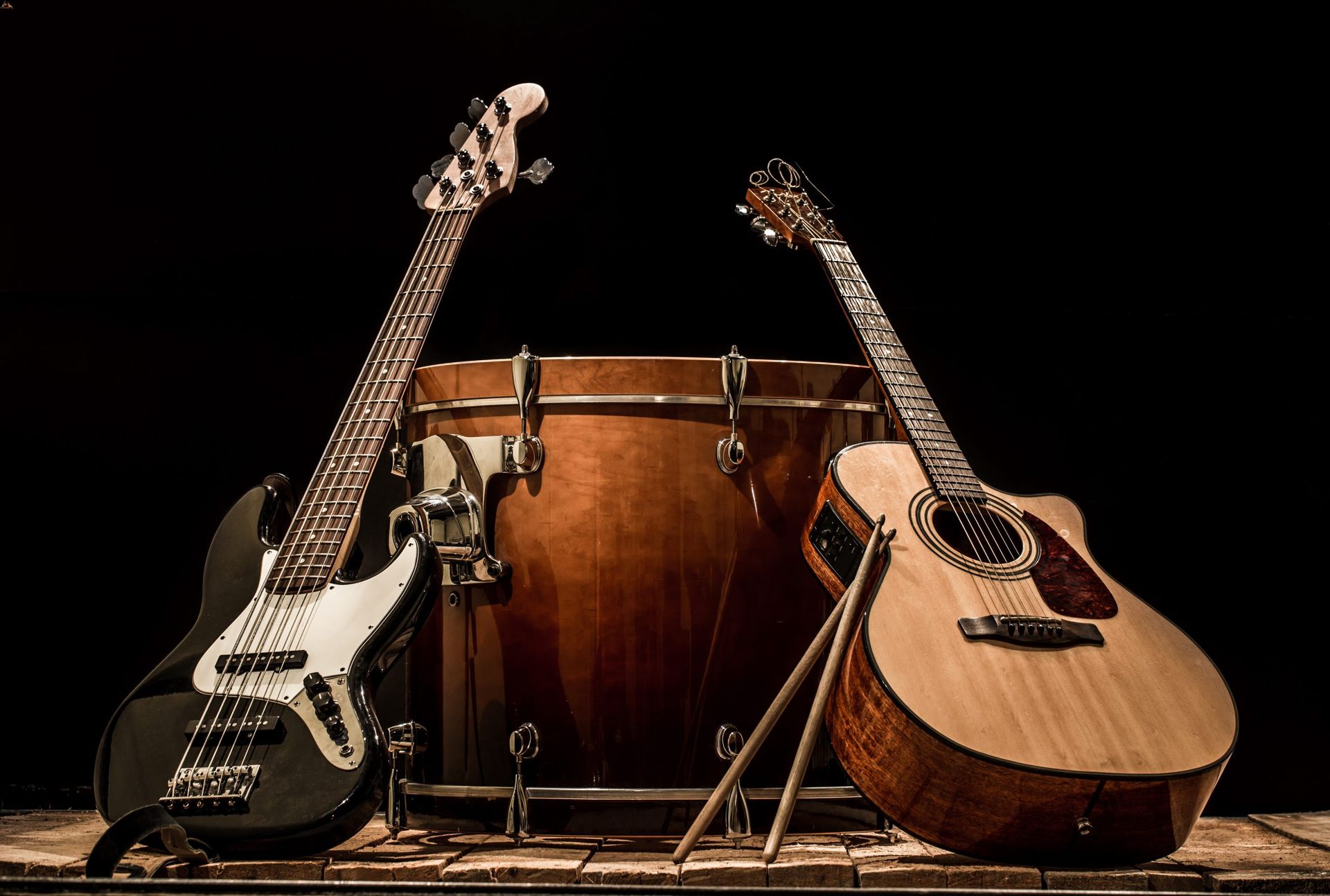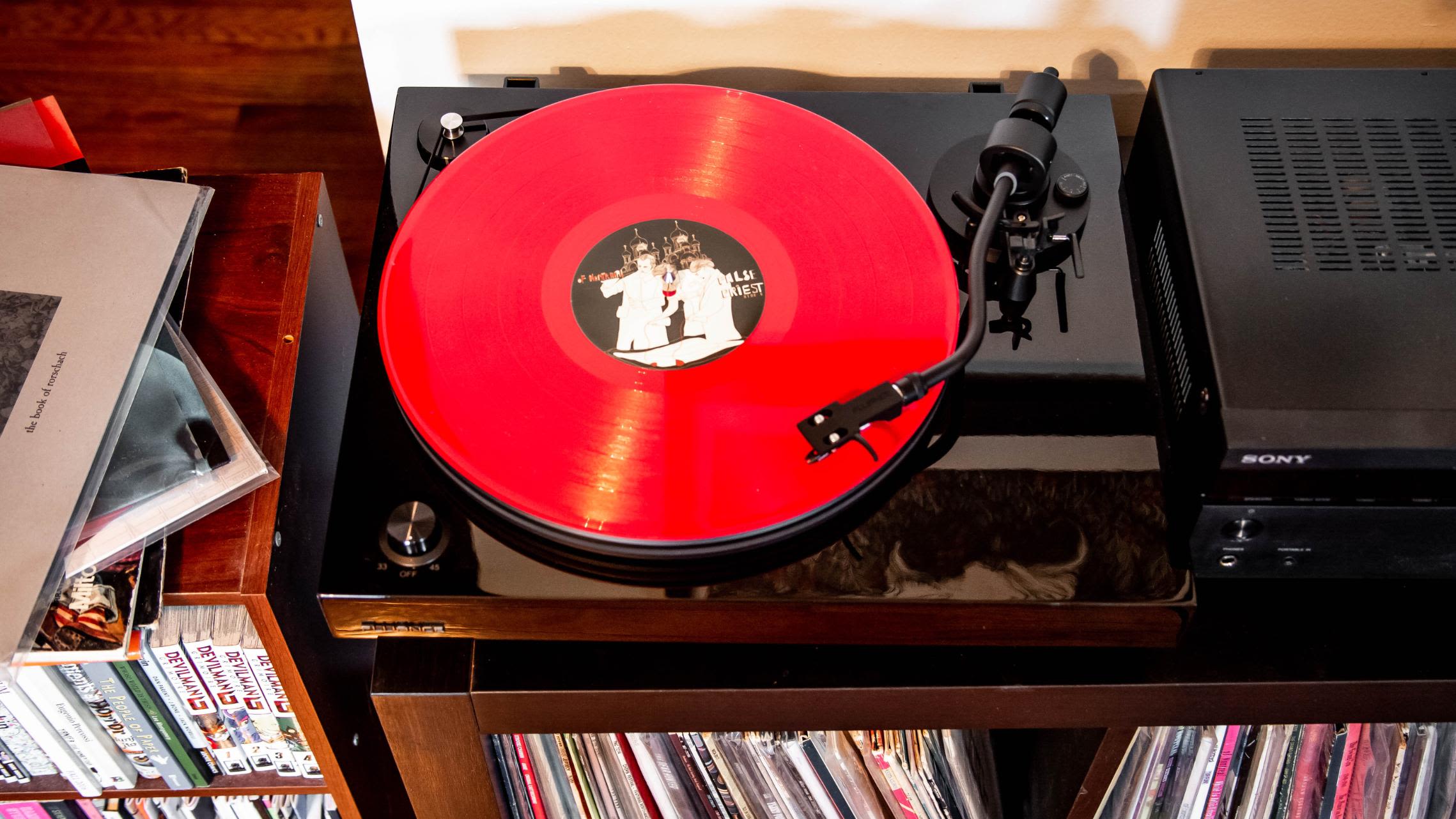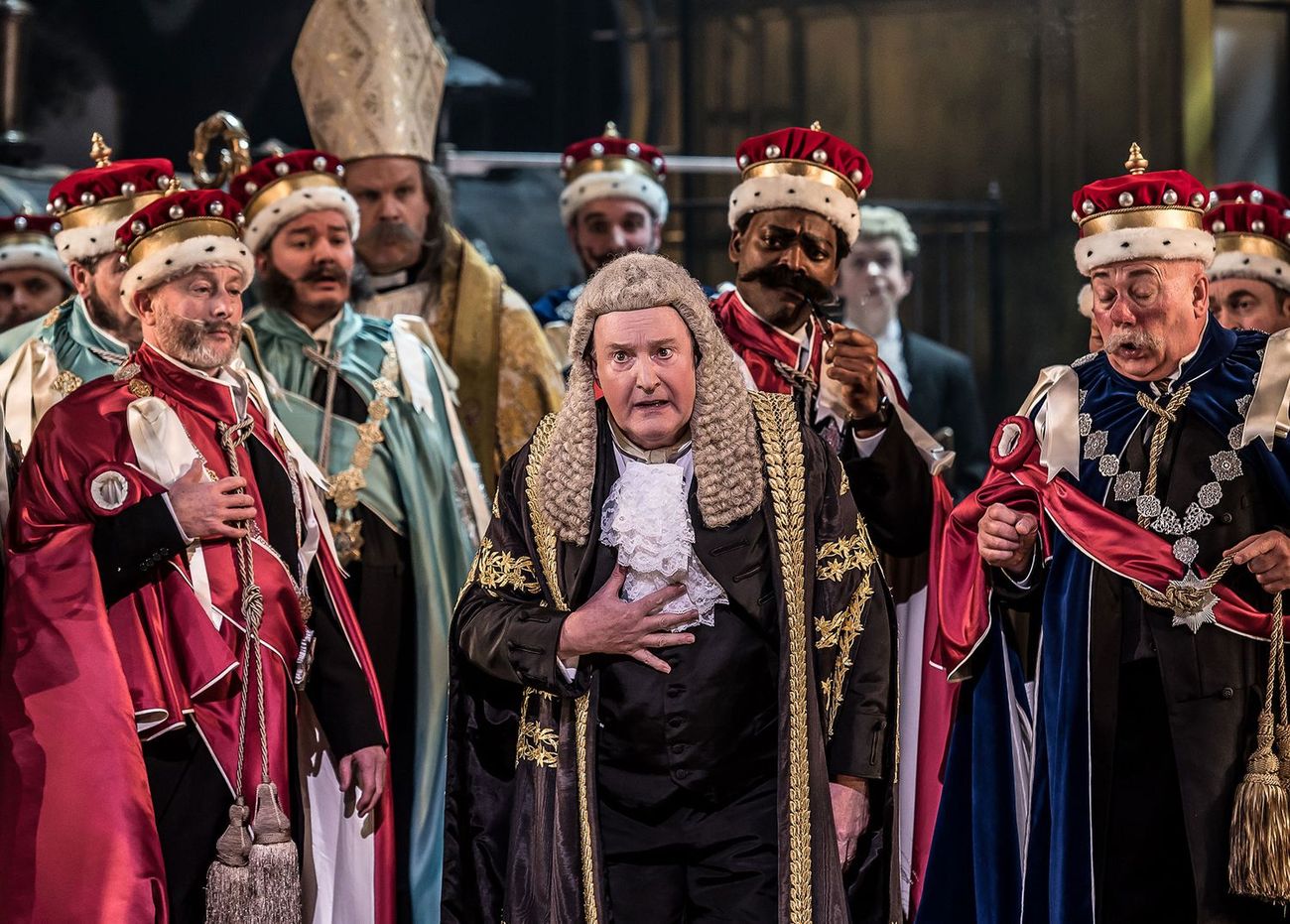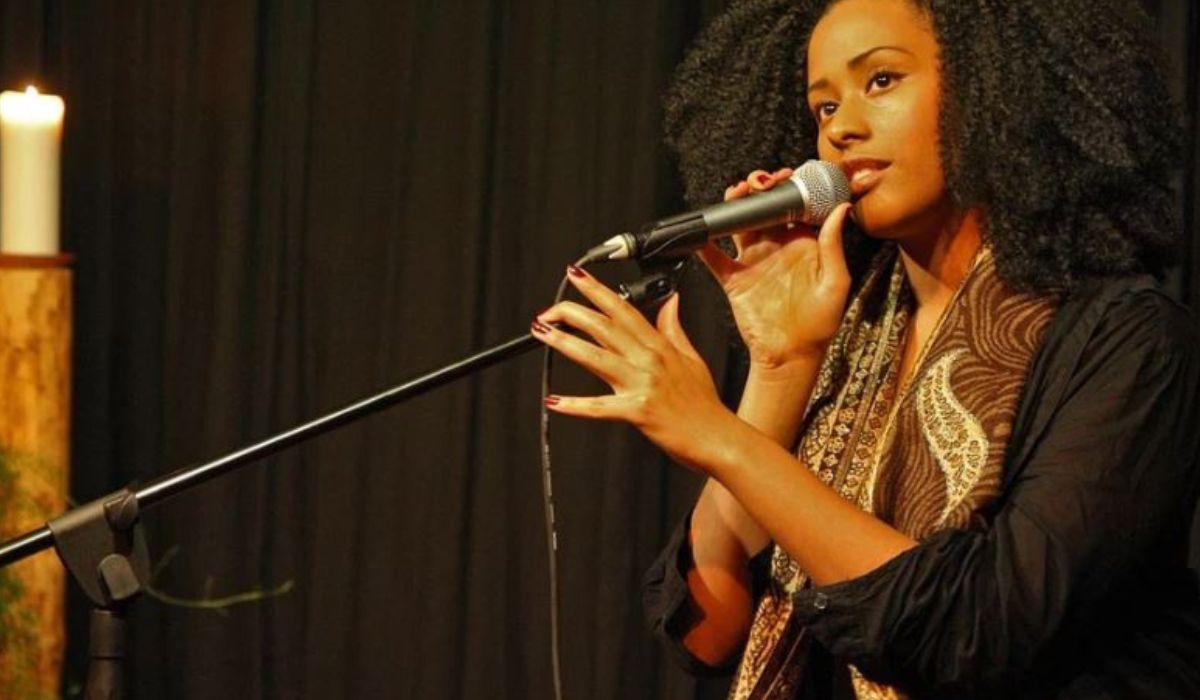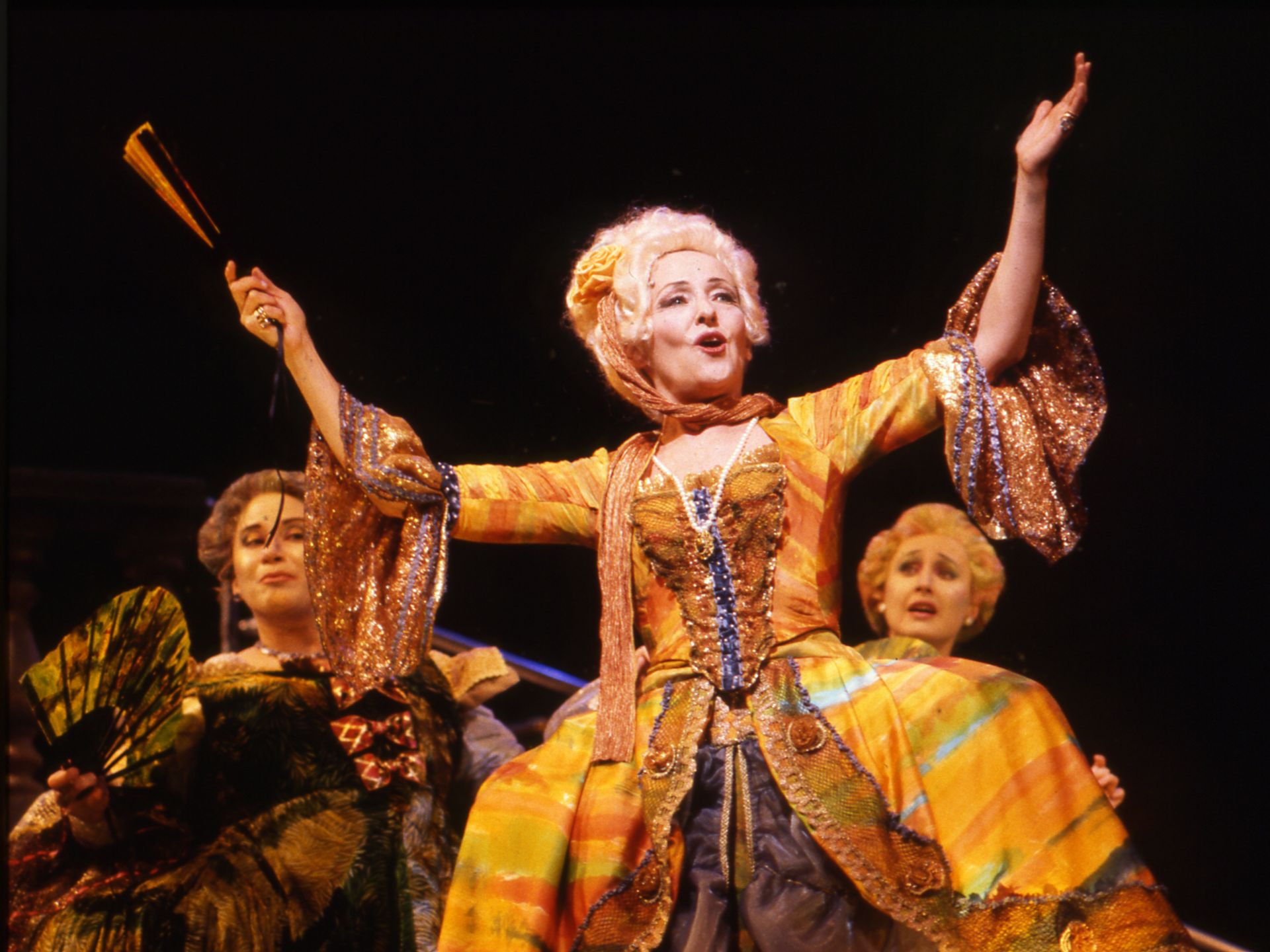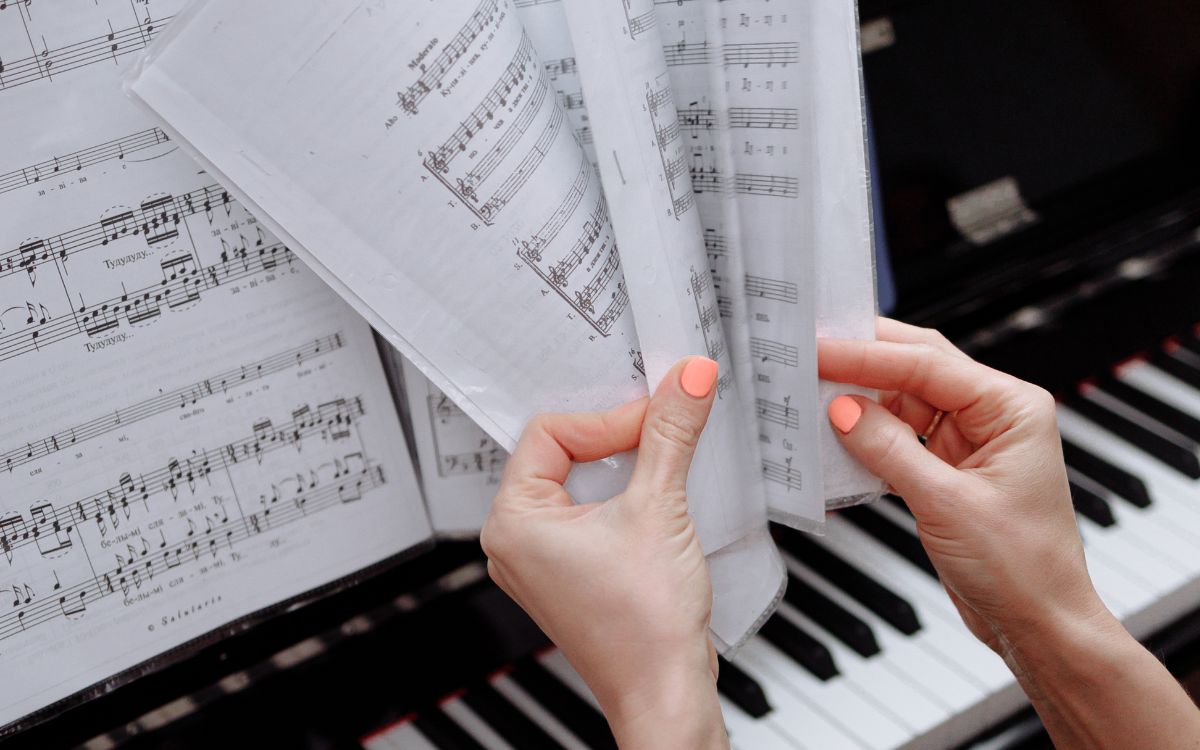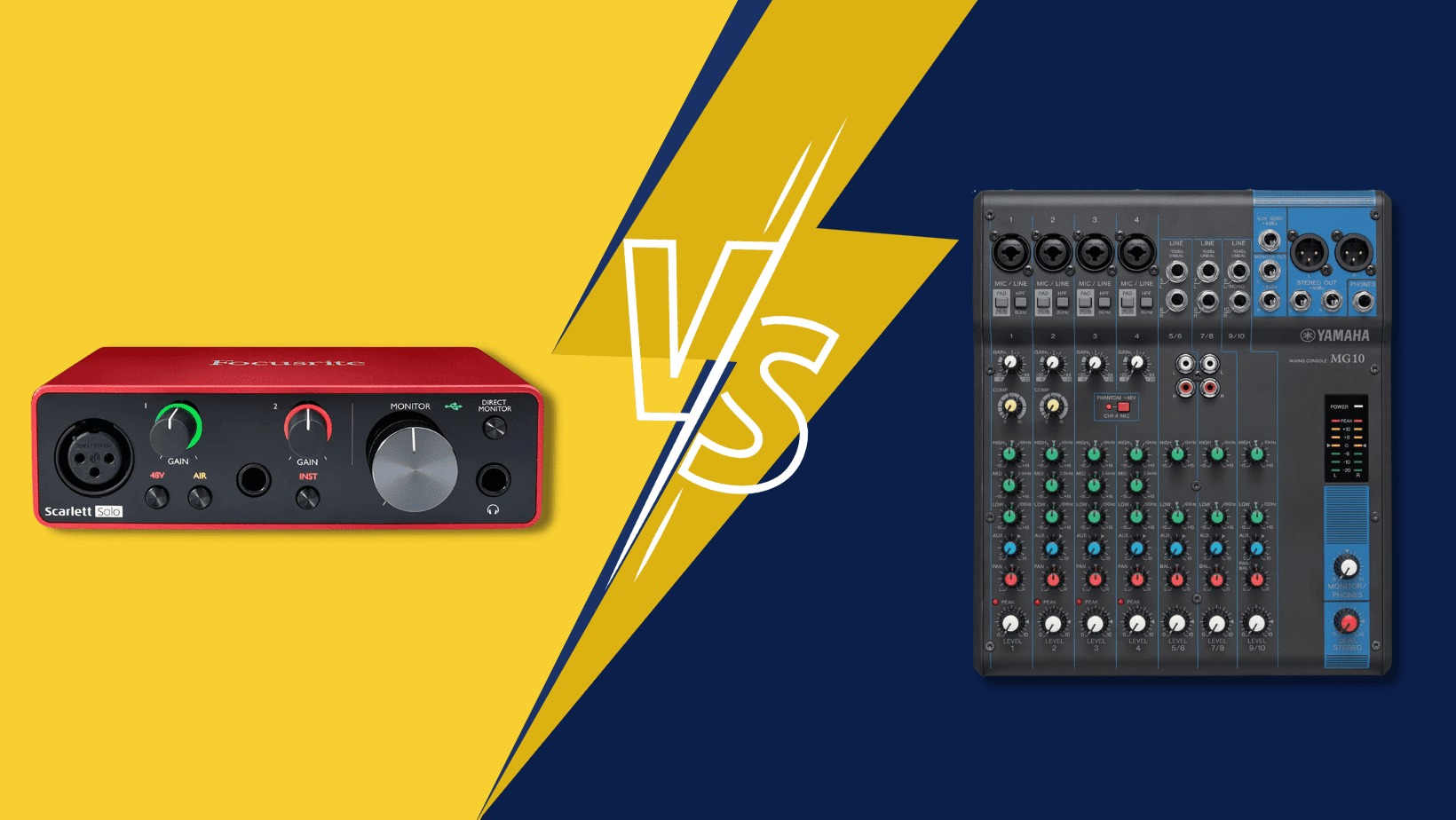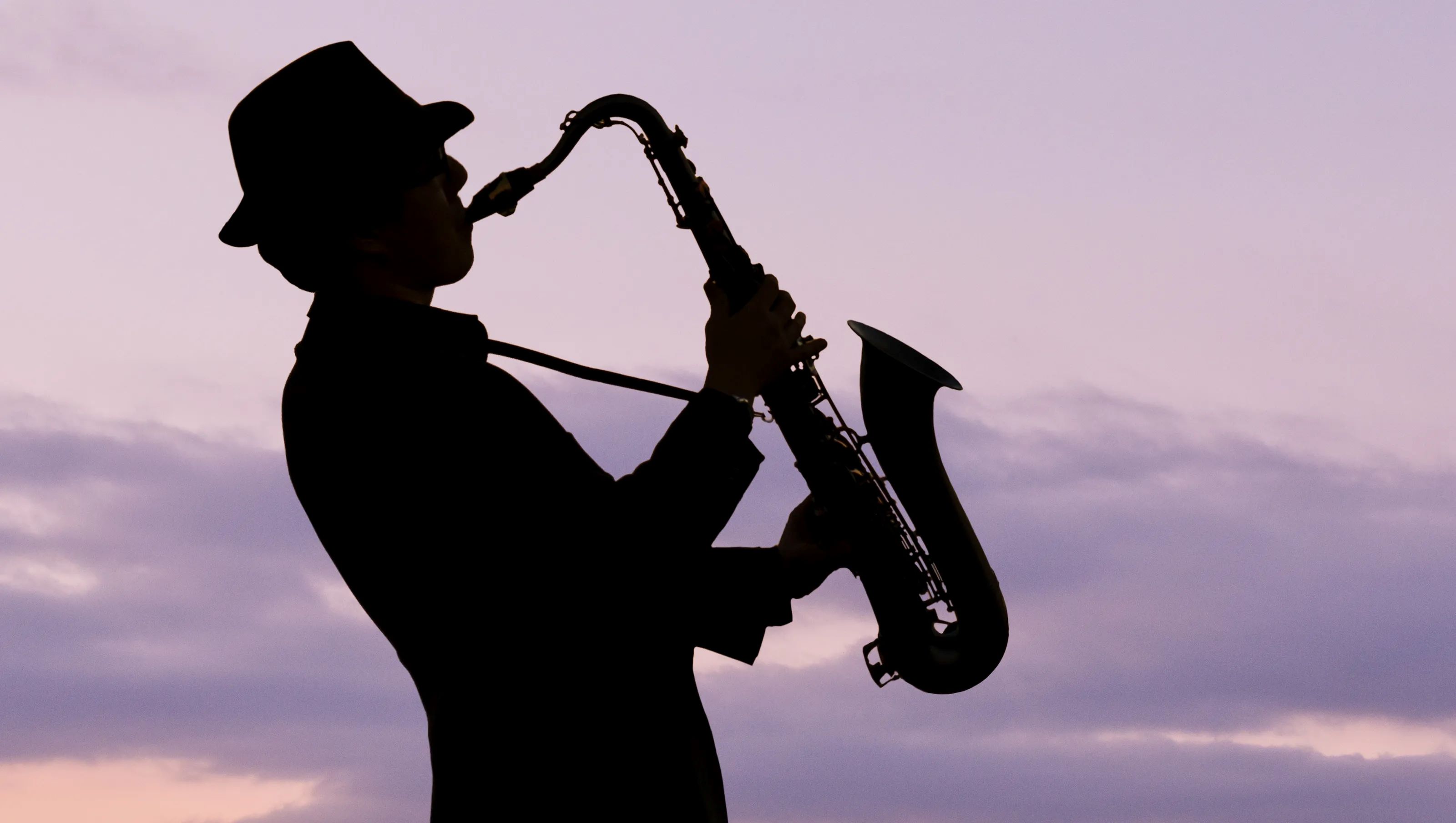Home>Genres>Hip Hop>What Is The Difference Between Hip Hop And R&B
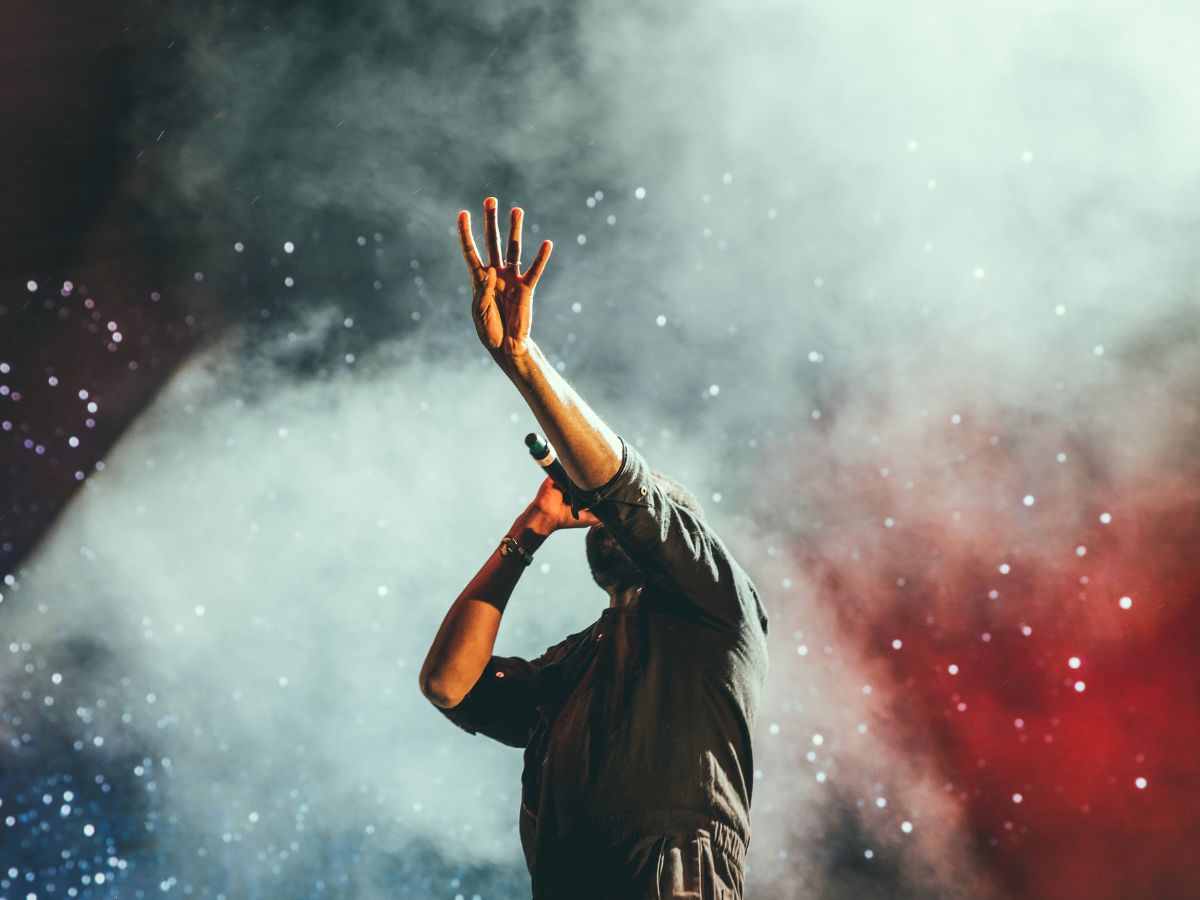

Hip Hop
What Is The Difference Between Hip Hop And R&B
Modified: March 3, 2024
Discover the distinction and contrasting elements between the captivating genres of Hip Hop and R&B, exploring their unique styles, influences, and cultural significance.
(Many of the links in this article redirect to a specific reviewed product. Your purchase of these products through affiliate links helps to generate commission for AudioLover.com, at no extra cost. Learn more)
Table of Contents
Introduction
Hip Hop and R&B are two of the most influential genres in music, known for their distinct styles and captivating rhythms. While both genres are rooted in African-American culture and have had a significant impact on the music industry, they have different origins, sounds, and cultural influences.
Hip Hop emerged in the 1970s as a cultural movement in the Bronx, New York. It encompasses various elements, including rap music, DJing, breakdancing, and graffiti art. R&B, on the other hand, has its roots in African-American gospel and blues music and was popularized in the 1940s. It combines soulful vocals with elements of funk, jazz, and pop.
With their unique styles and rich histories, Hip Hop and R&B have shaped the music landscape and influenced countless artists across different genres. Understanding the difference between the two genres is essential for music enthusiasts who want to appreciate their distinct qualities and contributions.
In this article, we will explore the defining characteristics of Hip Hop and R&B, delve into their historical backgrounds, analyze the musical elements that distinguish them, and examine their cultural influences. We will also discuss the collaborations between artists from both genres and highlight some of the main artists and songs that have made significant contributions to their respective genres.
Furthermore, we will examine the popularity and commercial success of Hip Hop and R&B, as they have become mainstream genres beloved by fans worldwide. Finally, we will conclude by highlighting the enduring impact of Hip Hop and R&B and their roles as influential forces in the world of music.
Definition of Hip Hop
Hip Hop is a cultural and musical movement that originated in the African-American and Latinx communities in the Bronx, New York, during the 1970s. It encompasses various artistic elements, including rap music, DJing, breakdancing, and graffiti art. Hip Hop is not just a genre of music; it is a way of life and a form of self-expression for the marginalized communities from which it emerged.
At its core, Hip Hop is characterized by its rhythmic beats and rhyming lyrics. The music often features sampled or looped drum breaks from various genres, including funk, soul, and R&B, which provides the foundation for the energetic and catchy beats that define the genre. The lyrical content addresses a wide range of social issues, personal experiences, and cultural narratives, providing a platform for artists to express their thoughts and perspectives.
In addition to rap music, Hip Hop culture includes DJing, where disc jockeys use turntables and mixers to create unique sounds and beats by manipulating vinyl records. Breakdancing, or b-boying, is another essential element of Hip Hop, characterized by acrobatic moves, intricate footwork, and dynamic body movements. Graffiti art, often seen as a form of visual expression, is another integral part of Hip Hop culture, with artists using walls and other surfaces as canvases to display their creativity and artistic talent.
Hip Hop has had a profound influence on popular culture, fashion trends, and artistic expression. Its impact can be seen in various forms of media, including films, television, and fashion. The genre has also played a significant role in giving a voice to marginalized communities, shedding light on social and political issues, and advocating for change.
While Hip Hop has evolved over the years and branched out into various sub-genres, such as trap, conscious rap, and mumble rap, the essence of the movement remains rooted in its ability to convey the experiences and emotions of its creators. It continues to be a powerful and influential force in the music industry, captivating audiences with its infectious rhythms, captivating storytelling, and raw authenticity.
Definition of R&B
R&B, short for Rhythm and Blues, is a genre of music that originated in African-American communities in the United States in the 1940s. It emerged as a fusion of various musical styles, including gospel, blues, jazz, and early rock and roll. R&B is characterized by its soulful vocals, melodic tunes, and a strong emphasis on rhythm and groove.
One of the distinguishing features of R&B is its incorporation of gospel music elements, such as call and response vocals, passionate delivery, and themes of love, heartbreak, and spirituality. The genre also draws heavily from blues music, infusing it with a more upbeat and danceable sound.
R&B music is typically driven by lush instrumentation, including piano, guitar, bass, drums, horns, and strings. The rhythmic elements, such as syncopated drum patterns and infectious basslines, create a groove that is irresistible and lends itself well to dancing. Additionally, R&B songs often feature harmonies and vocal arrangements that showcase the vocalists’ range and skill.
In its early years, R&B was primarily performed by African-American artists for African-American audiences. However, the genre gained popularity among a wider audience in the 1950s and 1960s, with artists such as Ray Charles, Sam Cooke, and Aretha Franklin. They helped to bridge the gap between R&B and mainstream pop music, paving the way for future generations of R&B artists to achieve commercial success.
Over time, R&B has evolved and incorporated different sub-genres and influences. Contemporary R&B, also known as “new school” R&B, emerged in the 1980s and combined elements of funk, soul, pop, and hip hop. This fusion resulted in a fresh and modern sound that resonated with a new generation of listeners.
Today, R&B continues to thrive, with artists like Beyoncé, Chris Brown, and Bruno Mars pushing the boundaries of the genre and infusing it with elements of electronic music, trap, and alternative R&B. The genre remains beloved for its soulful melodies, heartfelt lyrics, and ability to connect with listeners on an emotional level.
While R&B has evolved and taken on different forms throughout the years, its essence remains rooted in its ability to create music that is filled with passion, vulnerability, and a deep appreciation for the rich musical traditions of African-American culture.
Historical Background
The historical background of Hip Hop and R&B is deeply intertwined with African-American culture and their experiences in the United States. Both genres emerged as responses to the social, political, and cultural climates of their respective times, reflecting the challenges and triumphs of the African-American community.
Hip Hop originated in the late 1970s in the South Bronx, New York. It was born out of the social and economic struggles faced by African-American and Latinx communities living in the inner-city neighborhoods. The South Bronx was plagued by poverty, crime, and social inequality, creating a fertile ground for artistic expression as a means of escape and empowerment.
During this time, DJs such as Kool Herc, Grandmaster Flash, and Afrika Bambaataa began transforming block parties and community gatherings by utilizing two turntables to mix and blend different songs. This technique, known as “breakbeat” DJing, laid the foundation for the rhythmic beats and sampled loops that would become synonymous with Hip Hop.
Simultaneously, MCs (Masters of Ceremonies) began to emerge, using wordplay and rhyming over the DJ’s beats to engage and energize the crowds. The combination of MCs, DJs, graffiti artists, and breakdancers created a unique cultural movement that encompassed music, art, dance, and self-expression.
On the other hand, R&B has roots in African-American musical traditions dating back to the early 20th century. Specifically, it draws heavily from gospel, blues, and jazz. R&B emerged as a genre in the 1940s, when African-American musicians sought to bring a more sophisticated and commercial sound to their music.
Artists like Ray Charles, Ruth Brown, and Sam Cooke infused their gospel and blues roots with elements of jazz and popular music. This fusion resulted in a more polished and accessible sound that appealed to a broader audience, further breaking down racial barriers in the music industry.
Throughout the 1950s and 1960s, R&B continued to evolve and reach new heights of popularity with the emergence of artists like James Brown, Aretha Franklin, and Stevie Wonder. They not only showcased their incredible vocal talents but also addressed social and political issues of the time, becoming the voice of the Civil Rights Movement and inspiring change through their music.
As decades passed, both Hip Hop and R&B continued to evolve and branch out, incorporating new sounds, technology, and cultural influences. Today, they remain integral parts of the music industry, reflecting the ever-changing landscape of contemporary music while preserving the legacy and contributions of African-American artists.
Musical Elements
Hip Hop and R&B are distinct genres with their own unique musical elements that contribute to their recognizable sounds. While both genres share some similarities, they also have notable differences in terms of instrumentation, production techniques, and overall musical structure.
Hip Hop is characterized by its rhythmic beats, which serve as the foundation of the genre. The beats are typically created using drum machines, samplers, and synthesizers, with a focus on creating catchy loops and sampled breaks. These samples are often taken from a wide range of musical genres, including funk, soul, jazz, and even rock.
In addition to the beats, rap vocals play a prominent role in Hip Hop. Rappers deliver their lyrics over the instrumental track, utilizing unique flows, intricate wordplay, and storytelling techniques. The lyrics often touch on personal experiences, social issues, and cultural narratives, making Hip Hop an effective platform for self-expression and social commentary.
R&B, on the other hand, emphasizes soulful vocals and melodic arrangements. The genre typically features lush harmonies, intricate vocal runs, and expressive delivery. R&B songs often center around themes of love, relationships, and personal experiences, showcasing the emotional depth and vulnerability of the genre.
Instrumentally, R&B incorporates a wider array of instruments, including piano, guitar, bass, drums, horns, and strings. These instruments contribute to the genre’s rich sound and provide a backdrop for the melodic and harmonic nuances of the vocals. R&B also often includes elements of funk and blues, adding a groove and emotional depth to the songs.
Both Hip Hop and R&B make use of sampling as a production technique, but with different approaches. In Hip Hop, sampling involves directly incorporating snippets of pre-recorded music into the beats, creating a collage-like effect. This technique gives Hip Hop its distinctive and eclectic sound, intertwining various musical elements into new compositions.
R&B, on the other hand, utilizes sampling more sparingly and often focuses on creating original arrangements and compositions. The emphasis is on creating cohesive melodies and harmonies that accentuate the vocal performances and create a smooth, soulful sound.
Overall, while Hip Hop and R&B share some musical elements, such as a strong emphasis on rhythm and groove, their distinct approaches to instrumentation, vocal style, and production techniques set them apart from each other. It is these differences that contribute to the diverse and dynamic nature of both genres, captivating audiences and making them enduring pillars of the music industry.
Vocal Style
The vocal styles in Hip Hop and R&B are distinct and reflect the unique characteristics and expressions of each genre. While both genres showcase the talents of their vocalists, they differ in terms of delivery, technique, and overall approach to singing and rapping.
In Hip Hop, the vocal style predominantly revolves around rapping. Rappers utilize a rhythmic and spoken word delivery, often characterized by their unique flows, wordplay, and storytelling abilities. The focus is on the clarity and articulation of the lyrics, allowing the message and the storytelling aspect of the rap to take center stage. Rappers often experiment with different rhyme schemes and cadences, showcasing their creativity and skill in crafting intricate and captivating verses.
Rap vocals in Hip Hop can vary in tone and intensity, with artists embodying different styles and approaches. Some rappers deliver their verses with a rapid-fire delivery, demonstrating their lyrical dexterity and ability to maintain a consistent flow. Others may opt for a more deliberate and laid-back approach, emphasizing the mood and emotional depth of their lyrics. The vocal style in Hip Hop is often gritty, raw, and filled with attitude, reflecting the genre’s roots in urban culture and the desire for self-expression and empowerment.
In contrast, R&B places a strong emphasis on melodic singing and soulful vocals. R&B vocalists showcase their range, control, and emotional depth through smooth and expressive deliveries. Their voices are often characterized by rich tones, runs, and vibrato, adding texture and depth to the songs. The focus is on conveying the emotions and the vulnerability of the lyrics, connecting with the listeners on an intimate level.
R&B vocalists often showcase their technical skills, incorporating impressive vocal runs, adlibs, and harmonies into their performances. They have the ability to infuse each note with passion, evoking a myriad of emotions in their listeners. R&B vocalists also explore different vocal dynamics, ranging from soft and tender to powerful and soul-stirring, creating captivating performances that resonate with their audience.
While rap vocals in Hip Hop predominantly feature solo performances, R&B often incorporates harmonies and group singing, adding depth and complexity to the overall sound. This allows R&B artists to showcase their vocal chemistry and create captivating arrangements that enhance the emotional impact of the songs.
Overall, the vocal styles in Hip Hop and R&B are distinct and highlight the unique characteristics and expressions of each genre. Whether it’s the rhythmic and intricate deliveries of rap in Hip Hop or the soulful and melodic singing in R&B, both vocal styles contribute to the overall identity and impact of the genres, captivating audiences and solidifying their place in the music industry.
Cultural Influence
Hip Hop and R&B have had a significant cultural influence, shaping not only the music industry but also fashion, art, and broader popular culture. Both genres have served as powerful platforms for marginalized communities to express their stories, address social issues, and create movements for change.
Hip Hop, in particular, has become a global phenomenon, transcending geographic boundaries and connecting with people from diverse backgrounds. It has given a voice to communities facing social and economic challenges, allowing them to share their experiences and perspectives in a powerful and accessible way. Hip Hop has empowered artists and listeners alike, encouraging self-expression, resilience, and social awareness.
Through its lyrics, Hip Hop tackles a wide range of social issues, including inequality, racism, violence, police brutality, and poverty. Artists like Public Enemy, N.W.A, and Kendrick Lamar have used their music as a platform for activism, shedding light on these pressing issues and sparking conversations about social change. Hip Hop has become a powerful force for social justice, inspiring movements like Black Lives Matter and allowing marginalized communities to reclaim their narratives.
R&B also carries significant cultural influence, particularly in its portrayal of love, relationships, and emotional experiences. The genre has been a soundtrack to many people’s lives, providing solace, inspiration, and a means of self-reflection. R&B has the power to resonate with listeners on a deeply personal level, creating a sense of connection and empathy.
Beyond its lyrical impact, R&B has also played a significant role in shaping fashion and style. Artists like Michael Jackson, TLC, and Beyoncé have influenced trends in clothing, hairstyles, and overall aesthetics. The smooth and soulful sound of R&B has also found its way into other genres, influencing artists across the musical spectrum.
Both Hip Hop and R&B have fostered a sense of community and belonging, with fans identifying strongly with the genres and forming cultural movements around them. The music has provided an outlet for creativity, self-expression, and personal growth, allowing individuals to connect with like-minded individuals and build supportive communities.
The cultural influence of Hip Hop and R&B can also be seen in the way they have inspired and influenced other genres. Artists from various backgrounds and musical styles have incorporated elements of Hip Hop and R&B into their music, blurring genre boundaries and creating innovative sounds. This cross-pollination of genres has led to the emergence of new styles and sub-genres, further enriching the musical landscape.
In summary, the cultural influence of Hip Hop and R&B cannot be overstated. Both genres have provided a platform for marginalized communities to express themselves, address social issues, and create movements for change. They have shaped fashion, art, and popular culture, resonating with diverse audiences and inspiring generations of artists. The impact of Hip Hop and R&B extends far beyond the realm of music, solidifying their place as cultural phenomena that continue to shape our society.
Collaborations
Collaborations between artists from the Hip Hop and R&B genres have become a common occurrence, resulting in some of the most memorable and impactful songs in music history. These collaborations bring together the unique styles, talents, and creative energies of artists from both genres, creating a fusion of sounds that captivates audiences and pushes the boundaries of musical expression.
One of the main reasons for the frequency of collaborations between Hip Hop and R&B artists is the natural synergy between the two genres. Hip Hop often incorporates R&B-inspired melodies and vocals, while R&B artists have embraced the rhythmic and lyrical elements of Hip Hop. This natural overlap has paved the way for seamless collaborations that showcase the best of both worlds.
Collaborations between Hip Hop and R&B artists have a long-standing history, dating back to the 1980s and 1990s when artists like LL Cool J and Boyz II Men collaborated on the hit song “Hey Lover.” These collaborations have only grown more prevalent over time, with artists recognizing the immense creative and commercial potential of joining forces.
These collaborations can take many forms. Sometimes, Hip Hop artists will invite R&B singers to contribute soulful hooks or harmonies to their rap songs, adding a melodic and emotional dimension. Other times, R&B artists will incorporate rap verses into their songs, infusing them with a contemporary edge and expanding their appeal to a broader audience.
Notable collaborations between Hip Hop and R&B artists include JAY-Z and Beyoncé’s “Crazy in Love,” Kanye West and Rihanna’s “All of the Lights,” Drake and Rihanna’s “Work,” and many more. These songs not only top the charts but also showcase the creative chemistry between artists from both genres.
Beyond individual collaborations, there have been instances where entire albums have been created as joint efforts between Hip Hop and R&B artists. Examples of such projects include the collaboration between Jay-Z and R. Kelly on the album “The Best of Both Worlds” and the joint album “Watch the Throne” by Jay-Z and Kanye West.
Collaborations between Hip Hop and R&B artists have also become a platform for exploring different musical styles and pushing artistic boundaries. These collaborations often result in innovative and genre-defying songs that blur the lines between Hip Hop and R&B, further diversifying and expanding the sonic landscape.
Ultimately, collaborations between Hip Hop and R&B artists have not only contributed to the artistic growth of individual artists but have also brought together diverse fan bases and sparked conversations about the power of collaboration and unity in music. These collaborations have become an integral part of the music industry and continue to redefine what is possible when artists from different genres come together to create something truly special.
Main Artists and Songs
Hip Hop and R&B have produced countless iconic artists and influential songs that have shaped the musical landscape and left a lasting impact on popular culture. These artists and their songs have not only achieved commercial success but have also become synonymous with their respective genres, showcasing the artistic depth and creativity within Hip Hop and R&B.
In the realm of Hip Hop, some of the main artists who have solidified their status as legends in the genre include pioneers like Grandmaster Flash and The Sugarhill Gang, who brought Hip Hop to the mainstream with the hit song “Rapper’s Delight.” Other seminal artists, such as Run-D.M.C., N.W.A, and Public Enemy, pushed the boundaries of Hip Hop with their thought-provoking lyrics and socially charged messages.
As the genre evolved, artists like Tupac Shakur, The Notorious B.I.G, and Jay-Z became iconic figures, leaving a lasting legacy through their impactful storytelling and lyrical prowess. Contemporary artists such as Kendrick Lamar, J. Cole, and Drake continue to push the boundaries of Hip Hop, bringing new perspectives and innovative approaches to the genre.
When it comes to R&B, the genre has been graced by legendary artists who have defined its sound and style. Icons like Aretha Franklin, Stevie Wonder, and Marvin Gaye set the standard with their powerful vocals and timeless hits that have become enduring classics. Artists like Whitney Houston, Mary J. Blige, and Beyoncé have carried the torch and further expanded the boundaries of R&B.
There have also been notable collaborations between Hip Hop and R&B artists that have yielded memorable songs. “Empire State of Mind” by JAY-Z featuring Alicia Keys became a modern anthem, capturing the spirit and grandeur of New York City. The collaboration between DJ Khaled, Rihanna, and Bryson Tiller on “Wild Thoughts” showcased a fusion of Caribbean-inspired beats and sultry R&B vibes.
Another significant collaboration is the partnership between Drake and Rihanna, which has resulted in chart-topping hits like “Take Care” and “Work.” These songs seamlessly blend their distinctive styles, combining Drake’s introspective rap verses with Rihanna’s captivating vocals.
In recent years, artists like The Weeknd, Frank Ocean, and SZA have gained recognition for their contributions to contemporary R&B. They have pushed the boundaries of the genre, incorporating elements of electronic music, alternative R&B, and experimental sounds.
These artists and their songs represent the breadth and diversity of Hip Hop and R&B, showcasing the range of talent and creativity within the genres. Their contributions have shaped and reshaped the musical landscape, inspiring future generations of artists while providing audiences with timeless and unforgettable music.
Popularity and Commercial Success
Hip Hop and R&B have soared in popularity and achieved immense commercial success, becoming dominant forces in the music industry. Both genres have captured the hearts and ears of millions of listeners worldwide, consistently topping charts and breaking records.
Hip Hop, in particular, has experienced a meteoric rise in popularity over the past few decades, evolving from a niche subculture to a global phenomenon. It has become the most consumed genre in the United States, with artists like Drake, Kendrick Lamar, and Post Malone consistently dominating the charts. The genre’s popularity is reflected in its widespread influence on pop culture, fashion, and even linguistic trends, as Hip Hop slang and terminology have become mainstream.
R&B, although having a slightly different trajectory, has also achieved significant commercial success. It has produced numerous chart-topping hits from artists like Beyoncé, Usher, and Rihanna, who seamlessly blend R&B with elements of pop, dance, and Hip Hop. R&B’s unique ability to evoke emotion, connect with listeners on a deep level, and provide soulful grooves has contributed to its enduring popularity.
Both genres have been embraced by a diverse range of audiences, cutting across age, race, and geographic boundaries. The popularity of Hip Hop and R&B has been facilitated by the rise of digital platforms and streaming services, allowing fans from around the world to access and engage with the music more easily.
Furthermore, collaborations between Hip Hop and R&B artists have propelled songs to staggering levels of popularity. These collaborations can create a crossover appeal that attracts fans from both genres and expands the reach of the music. Songs like “Umbrella” by Rihanna featuring JAY-Z and “Love The Way You Lie” by Eminem featuring Rihanna demonstrate the commercial potency of these collaborations, achieving chart-topping success.
Commercial success in Hip Hop and R&B extends beyond the music itself. Artists from these genres have also made significant contributions to other industries, including fashion, endorsements, and entrepreneurship. Many Hip Hop and R&B artists have built successful brands and businesses, leveraging their influence and musical success to branch out into other ventures.
The success of Hip Hop and R&B can also be attributed to their versatility and ability to adapt to evolving trends and tastes. These genres have consistently incorporated elements from other genres, such as pop, rock, EDM, and Latin music, broadening their appeal and attracting new audiences.
Moreover, the advent of social media has played a significant role in magnifying the popularity of Hip Hop and R&B. Artists can connect directly with their fans, share their music, and promote their brand, amplifying their reach and influence.
Overall, the popularity and commercial success of Hip Hop and R&B are undeniable. These genres have transcended boundaries, captivated audiences worldwide, and influenced the music industry in profound ways. Their enduring appeal reflects the power of their music, the cultural significance they embody, and the ability to connect with listeners on a personal and emotional level.
Conclusion
Hip Hop and R&B are two iconic genres with rich histories, distinct styles, and profound cultural influences. Throughout the years, these genres have captivated audiences, broken barriers, and produced timeless music that continues to resonate with listeners worldwide.
Hip Hop, born out of the South Bronx in the 1970s, emerged as a cultural movement, providing a voice for marginalized communities and addressing social issues through powerful lyrics and infectious beats. R&B, on the other hand, evolved from African-American musical traditions, incorporating soulful vocals and melodic arrangements that touch the hearts and souls of listeners.
Both genres have showcased remarkable talent from a diverse range of artists, who have contributed to their respective genres’ growth and success. From legendary figures like Aretha Franklin, Jay-Z, and Stevie Wonder, to contemporary stars like Beyoncé, Kendrick Lamar, and The Weeknd, these artists have left an indelible mark on the music industry.
The cultural influence of Hip Hop and R&B extends beyond the realm of music. These genres have become platforms for self-expression, empowerment, and social change. They have influenced fashion, art, and popular culture, connecting diverse communities and fostering a sense of belonging.
The collaborations between Hip Hop and R&B artists have further enriched the musical landscape, creating innovative and genre-defying songs that showcase the best of both worlds. These collaborations have become an integral part of the music industry and reflect the endless possibilities when artists from different genres come together.
Both genres have achieved massive commercial success, with Hip Hop becoming the most consumed genre in the United States and R&B producing chart-topping hits and influencing popular culture. The digital age and social media have played a significant role in amplifying their popularity and connecting artists directly with their fans.
In conclusion, Hip Hop and R&B continue to shape and redefine the music industry. These genres, with their unique styles, diverse voices, and enduring appeal, have transcended barriers and inspired millions of listeners. From the rhythmic beats and storytelling of Hip Hop to the soulful vocals and emotional depth of R&B, these genres will continue to evolve, inspire, and leave their mark on future generations of music lovers.

